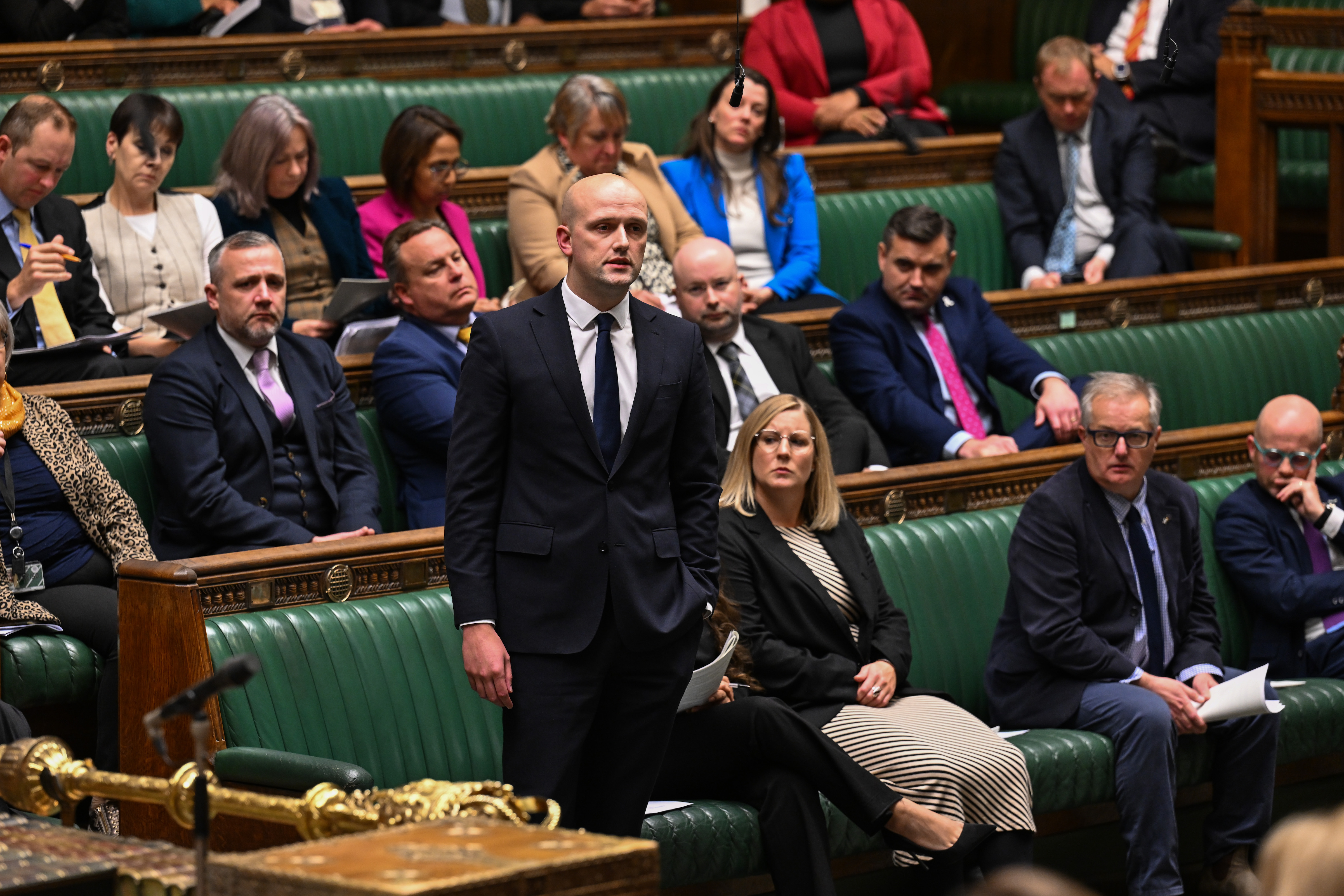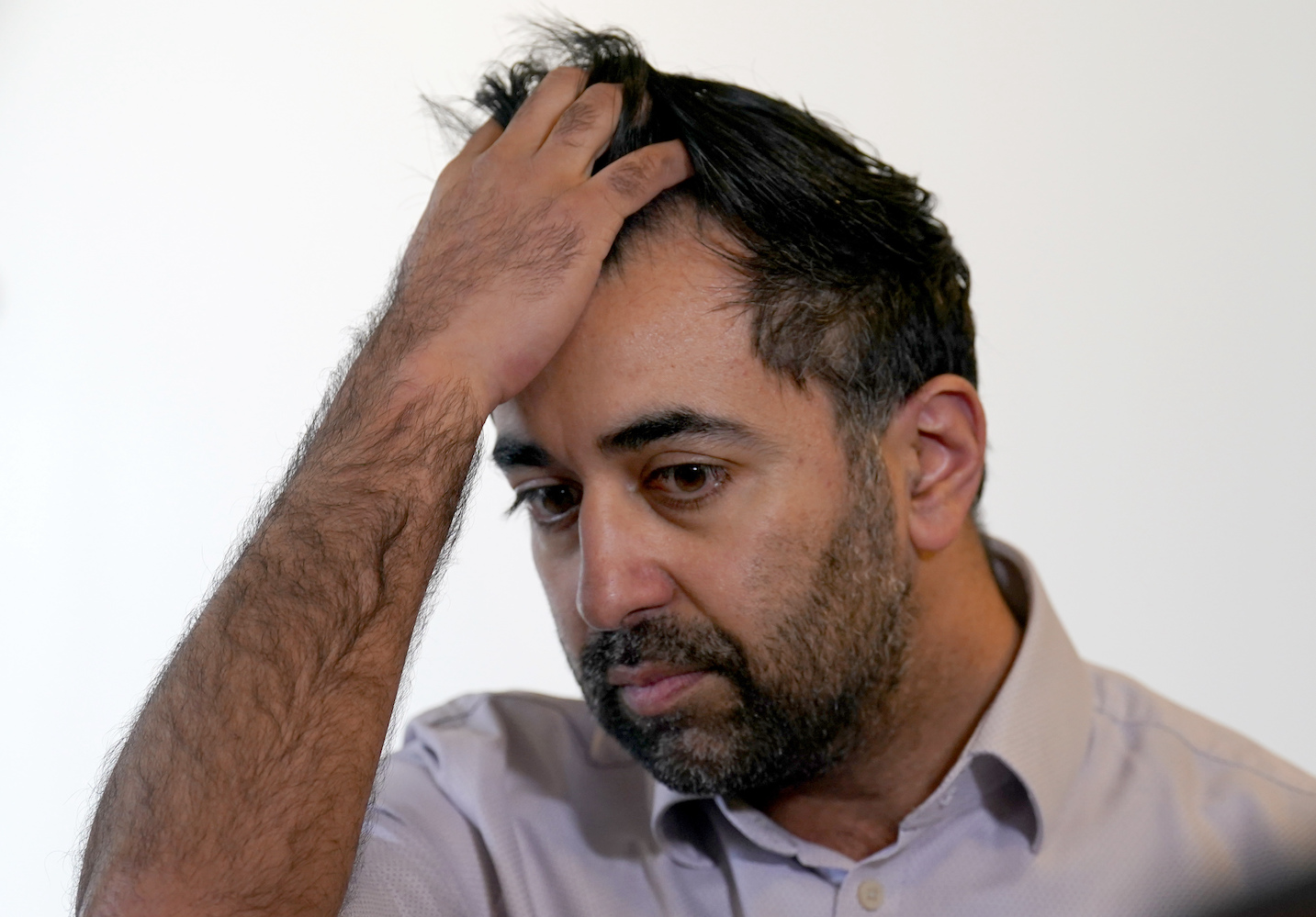What are academy schools?
In the English education system, academies are publicly-funded schools which operate independently of local authorities, doing so in a framework which the government claims is designed to promote innovation and raise school standards.
Academies have greater autonomy than traditional maintained state schools in areas such as the delivery of the curriculum, setting staff pay and conditions, changing the length of the school terms and the school day, and determining their own uniform policies.
An academy trust that runs more than one academy is called a multi academy trust (MAT). Member schools operate under a single governance structure. Roughly two-thirds of academies are part of multi-academy trusts. The majority of multi academy trusts oversee five schools of fewer, but around 30 multi academy trusts oversee 26 schools or more.
In January 2022, nearly 4.65 million pupils attended academies and free schools in England, equating to 79% of secondary pupils and 40% of primary pupils.



The majority of secondary school children are now educated at academies.
Types of academies
Academy schools come in a variety of different forms, albeit a distinction can be made between existing schools that move to academy status, and entirely new schools (free schools).
Existing Schools – Academies
Most academies are existing schools that have converted from a previously maintained status (under the auspices of the local education authority).
Sponsored academies have usually been set up to replace under-performing schools. Sponsors are responsible for establishing the academy trust, the governing body, and for appointing the head teacher. Sponsors can come from a wide variety of backgrounds including businesses, faith communities, universities and individual philanthropists. Outstanding schools and academies may now also become sponsors themselves.
Converter academies are successful schools that have chosen to convert to academies in order to benefit from the increased autonomy that academy status is said to bring. This option was introduced in 2010 as part of the then Coalition government’s plan to broaden the academy programme.
University Technical Colleges (UTCs) are technical academies specialising in subjects such as engineering and construction. These are taught alongside traditional academic subjects, and ICT and business skills. UTCs are often sponsored by leading local businesses or local universities and strive to respond to local skills needs.
Studio schools are smaller schools that provide project-based practical learning alongside mainstream academic study. Students often work with local employers and follow a curriculum designed to equip them with specific skills and qualifications they will need for work or further education.
Free Schools
The academies programme also includes what are known as Free Schools. Free schools are actual whole new state schools, which operate in law, as academies.
The first Free Schools opened in September 2011. They are state funded, non-profit making, all-ability primary or secondary schools. Free schools are typically set up in response to demands from specific groups of local parents for better educational provision within their local community.
Free schools can be located in a variety of buildings, from offices to church halls. They have so far been set up by a wide range of groups including teachers, charities, universities, businesses, and faith groups.
The operation of academy schools
The ways in which academies operate, and how they typically differ from the maintained sector overseen by the local authority, are laid out below:
Curriculum
Where maintained mainstream schools must follow the national curriculum; academies don’t have to follow all aspects of the national curriculum and can chose to follow it in full or in part. Primary school academies do though still have to participate in national curriculum assessments (also known as SATs).
Since September 2020, all academies and free schools have been required by legislation to offer revised Relationships and Sex Education, and health education.
Management
Academies are run by individual charitable bodies called academy trusts. Local councils have little direct involvement in the management of academies.
Ofsted (the Office for Standards in Education, Children’s Services and Skills) is responsible for inspecting the quality of education in all state-funded academies and free schools. It uses the same inspection framework as for maintained schools.
The operation of academies is further overseen by the Education and Skills Funding Agency (ESFA) which is an executive agency within the Department for Education. Complaints about academies are handled by ESFA, once a complainant has been through a school’s own internal complaints procedure.
Academies are also overseen by a series of Regional Schools Commissioners appointed by the Department for Education. Regional Schools Commissioners cover eight separate regions within England. They monitor academy performance, approve some strategic and management decisions, and intervene when academies are deemed to be under performing.
Regional School Commissioners also decide on applications from maintained schools that wish to convert to academy status, review applications from sponsors, and advise on proposals for new free schools.
Admissions
Academies have to comply with the Department for Education’s School Admissions code and the law regarding school admissions. The Secretary of State does though have the power to vary this requirement where there is a “demonstrable need”.
New ‘free faith schools’ are currently able to offer half of their places based on religious selection, but they must keep at least half of places open to all children, irrespective of their religious or non religious backgrounds. As is the case for maintained faith schools, if a faith academy has fewer applicants than places (i.e. it is undersubscribed) it generally has to offer a place to any child that applies, without reference to faith.
Teachers
Academy Trusts employ their own staff, whereas in maintained schools the local authority is typically the employer.
As part of their funding agreement with the Department for Education, some academies and free schools do not have to employee teachers with formal ‘Qualified Teacher Status’ (QTS). The opposite is generally the case for maintained schools.
This approach to teacher recruitment for academies is designed to free up an academy to employ professionals, such as scientists, engineers, musicians, overseas teachers, and university lecturers, who may be well qualified with a wealth of useful knowledge, but who lack the specific Qualified Teacher Status.
Funding
Funding for academies typically comes in three forms. Initial grants that are available for the feasibility, planning and implementation stage in establishing an academy. Capital grants that are available in relation to buildings. And then, funding provisions for the running costs of the academy, once it is open.
The Government has stated that “becoming an academy should not bring about a financial advantage or disadvantage to a school”. Academies therefore receive the same level of per pupil funding that is available at a maintained school. All academies are required to abide by strict financial rules in relation to financial management, control and reporting, as laid down by the Education and Skills Funding Agency handbook.
Academy sponsors, as well as companies and individuals related to academy sponsors, are allowed to provide contracted services to their sponsored schools, as long as this is provided ‘at cost’ in the case of transactions over certain financial limits.
General Provisions
As with maintained state schools, academies are required to follow the law and guidance on special educational needs and exclusions, and to collaborate and share facilities with other schools and the wider community.
What are advantages and disadvantages of academy schools?
The academies programme was controversial when it was launched and continues to be so today.
Why do schools become academies?
The academy programme retains a large number of supporters. The Labour Peer, Lord Adonis, the programme’s original architect, has claimed that academies are the best way to “breach the educational Berlin Wall between private and state education”. Whilst the Conservative government has suggested that the large volumes of schools which have chosen to move to academy status, shows schools voting with their feet, recognizing the benefits possessed by existing academies, and demonstrating the success of the programme.
The central argument put forward for academy schools is that they provide head teachers and school leaders with the freedom to take the decisions which they feel are in the best interests of their own school.
Academies are able to set their own targets, curriculums, class-sizes, adjust salaries, and decide where funds are allocated within their schools. This is presented as the managerial lifeline that a struggling school needs in order to be able to improve its fortunes. To their supporters, academies are presented as a means of driving up educational standards in disadvantaged areas.
It is suggested that making the switch to an academy status provides the opportunity for schools to operate more like a business. It is argued that the autonomous management structure of academies supports internal accountability and drives up standards.
The introduction of outside financial expertise, such as a sponsor or larger academy chain, is said to allow the school body to focus better on education standards, whilst the academy management keep an eye on the budget. It is further suggested that those Multi-Academy Trusts that prove successful, will be able to grow and spread the benefits of their expertise across the education system, whilst those that are less successful will shrink.
Free schools have also been advanced as one solution, to generating extra school places, in those local areas where there is a shortage of school places.
Disadvantages of Academy Schools?
At the same time, the academy programme has also faced criticism from some teachers, parents and politicians.
Where the academy programme was originally initiated by the Labour government of Tony Blair, under the leadership of Jeremy Corbyn, the Labour Party moved to variously characterize the programme as representing a step towards privatisation, a waste of money, selective, and damaging to the surrounding schools.
Speaking to the Labour Party Conference in September 2018, the then shadow Education Secretary, Angela Rayner, announced that a future Labour Government would “start by immediately ending the Tories’ academy and free schools programmes”. In contrast to the school based ‘autonomy model’ championed by academy supporters, Ms Rayner advanced the case for schools to be returned to democratic oversight of local councils.
In terms of specific criticisms, the academy programme has been said to create problems in terms of school places. For whilst local authorities retain the statutory responsibility to ensure there are enough school places for local children, they lack control over the number of places in academy schools.
It has also been argued that academies are specifically targeted by middle class parents, thereby denying access to the disadvantaged pupils they were intended to help. At the same time, it is suggested that academy schools possess the best facilities and attract the best teaching staff, something which in turn increases the chances of the remaining schools in a local area becoming so called ‘sink schools’.
Further concerns have also been raised around the ability of academies to employ teachers who are not formally qualified, and to vary teacher salary levels. Education unions have drawn attention to the remuneration levels of the Directors of several academy trusts, which they have suggested exceed those of some of the UK’s university vice chancellors.
Others have expressed reservations around the freedom of academies, particularly free faith schools, to disregard aspects of the national curriculum. This it has been suggested provides free rein to religious sponsors to teach topics such as creationism over biology.
The history of academies
Labour Government – 1997 to 2010
Academies were launched initially as City Academies by the Labour government in 2000. Andrew Adonis, who was a Downing Street education policy adviser at that time, and who subsequently became Lord Adonis and a Labour Cabinet Minister. He is widely credited as the architect of the programme.
In a bid to tackle the high number of poorly performing schools, the Labour government had already established a Fresh Start scheme in which the weakest schools were closed and then re-opened under new management. This was not an unequivocal success and in May 2000 then Education Secretary David Blunkett said the Government had decided “a more radical approach” was needed and “substantial resources” would now be provided for the establishment of city academies.
The Labour leadership believed the experience of specialist schools and education action zones had shown that schools could benefit from involvement with non-governmental partners. Business, the churches and the voluntary sector were all courted as potential sponsors and partners for the new city academies, which would also “take account of the best lessons of City Technology Colleges and Charter Schools in the United States”.
The Education Act of 2002 provided for the prefix ‘city’ to be removed in order to enable schools in non-city areas to join the academy programme. The Act also provided for City Technology Colleges to become academies.
The first three academies opened in 2002; they were The Business Academy in Bexley, Greig City Academy and the Unity City Academy. The Business Academy, Bexley also became the first ‘all-through’ academy when a primary section was added in 2004.
By 2006 there were 46 academy schools in the UK. These included five former City Technology Colleges and five new schools. Of the 46 academies, 23 were in London. The National Audit Office reported that by October 2006, the academies programme, had cost £1.3 billion in capital and running costs.
The target at that time was for 200 academies to be open or in development by 2010. However, then prime minister, Tony Blair, announced that he wanted the programme to be accelerated and reach 400 academies – double the target – by 2010.
Despite speculation to the contrary, when Gordon Brown took over as prime minister in June 2007, he appeared equally enthusiastic, and pledged to continue the expansion of the academies programme. Writing in the Observer in 2008, Mr Brown said he had discussed with academy sponsors the possibility of “accelerating the expansion of our 400 planned academies as engines in disadvantaged areas for social mobility and social justice – not exclusive opportunities just for the few, but a new means of advancing opportunity for all”.
As it turned out, the number of academies rose from 83 in 2007 to 203 by 2010, just slightly over the original 200 target.
Government Policy – Since 2010
The new Conservative Liberal Democrat coalition government elected in May 2010 came into power with even more ambitious plans for the academy programme.
The newly appointed Education Secretary, Michael Gove, wrote to every head teacher in England saying he intended to open up the programme to all schools, including for the first time, primary and special schools.
Mr Gove said the Government was “genuinely committed to giving schools greater freedoms” and added, “We trust teachers and head teachers to run their schools. We think head teachers know how to run their schools better than bureaucrats or politicians.”
Schools rated ‘outstanding’ by Ofsted were to be fast-tracked through the system and the Academies Bill, included in the Queen’s Speech and subsequently passed in July 2010, enabled the first tranche of these academies to open in September 2010.
The academies programme then continued at pace under the Coalition. By January 2011 there were 407 academies open in England. Of these 204 had opened since September 2010. An additional 254 more schools had applied to become academies, and more applications were coming in every week.
In June 2011, the Government announced plans for “the weakest” 200 primary schools to become sponsored academies during 2012/13. This was in addition to the 1,200 schools which had now applied to convert to academy status. The Government said the rapid conversion of so many schools to academies meant there was now “a larger pool of great schools to build chains and improve under-performing schools”.
Following victory in the 2015 General Election, the Conservative government under David Cameron laid out plans for a yet another further rapid expansion of the Academy programme. However, in 2016 these plans were softened, and whilst the government said its aim was the ‘full academisation’ of the UK’s schools, it would not now pursue a policy of ‘blanket conversion’.
The then Education Secretary Justine Greening said the government’s focus was on, “building capacity in the system and encouraging schools to convert voluntarily”.
In 2019/20, the annual school census data showed there to be 9,041 academy schools responsible for educating 4.42 million children. This compared with 12,988 directly maintained local authority schools responsible for educating 4.65 million pupils.
Although still the minority model of operating amongst primary schools, the majority of secondary schools had now become academies.By November 2022, there were a total of 10,146 academies in England.
Statistics
Of the free primary schools that had been inspected by Ofsted in 2019, 37% had been graded as outstanding and 53% had been graded as good. Across all primary school types, 18% were outstanding and 69%, good.
Of the free secondary schools that had been inspected by Ofsted in 2019, 27% of secondary free schools were graded outstanding overall, and 55%, good. Across all secondary school types, 21% were graded outstanding, and 54%, good.
[Source – Ofsted, ‘State-funded schools inspections and outcomes as at 31 March 2019’, 13 June 2019. Free school figures excludes University Technical Colleges and Studio Schools.]
As of January 2020, 35% of primary schools are now academies or free schools, up from 32% in 2019. These schools account for 37% of the primary school population. 77% of secondary schools are academies or free schools, up from 75% in 2019. This accounts for 77% of secondary school pupils. [Source – Department for Education]


























